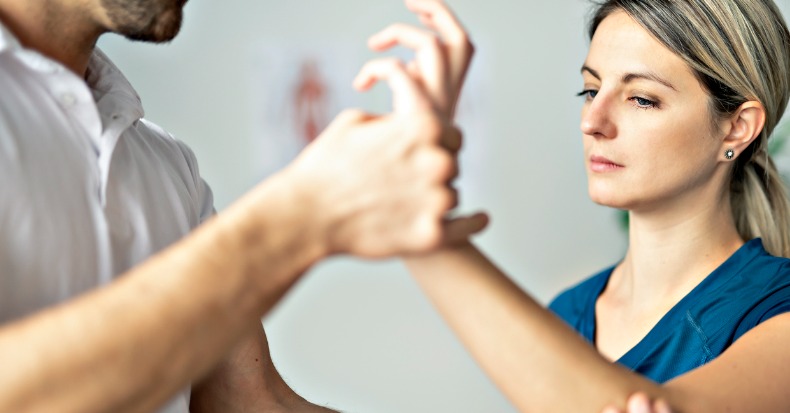Carpal tunnel syndrome (CTS) is a condition that occurs when the mobility of the median nerve is impeded as it passes through the wrist. Outside of emergency circumstances, clinical guidelines recommend that patients exhaust conservative options before consulting with a surgeon. The most common conservative treatments are splinting of the wrist (especially at night), steroid injection, electrotherapy, and manual therapy, which has gained attention in recent years.
Previously published reviews on the use of manual therapies for CTS also included other conservative therapies, which makes it a challenge to determine if manual therapies alone are effective or only when combined with other forms of treatment. To uncover the effectiveness of manual treatment for mild-to-moderate CTS, the authors of a 2022 systematic review looked at data on 410 patients from six studies and concluded that the use of manual therapies not only improves CTS-related symptoms (pain, numbness, tingling, and weakness in the hand and wrist), but also the function of the median nerve itself, as seen with nerve conduction velocity testing.
Doctors of chiropractic are trained in manual therapies of many varieties including: joint manipulation (high-velocity, low amplitude thrust), mobilization (low- to medium- velocity, low- to medium- amplitude non-thrust), instrumentation use (Activator, Graston technique, Gua Sha), soft-tissue mobilization (gliding, shearing), massage (longitudinal, transverse, friction, deep and superficial), neuromobilization methods (nerve gliding at the cervical spine, thoracic outlet, brachium/arm, antebrachium/forearm, wrist, hand and fingers), and more.
It’s important to note that restriction or compression of the median nerve anywhere along its course—from the neck to the hand—can increase the risk for CTS and even lead to symptoms that mimic the condition. In fact, there’s research that supports that the use of manual therapies to reduce the perineural tethering in the forearm can improve the movement of the median nerve during finger, hand, wrist, and elbow movements. Hence the importance of evaluating the full course of the median nerve when a patient seeks care for CTS.
While the data suggests that manual therapies alone may be sufficient to manage CTS, doctors of chiropractic will often utilize a multimodal approach that also includes specific exercises, physiotherapy modalities, nocturnal splinting, nutrition recommendations, and more, all with the aim of helping the patient experience maximum improvement in the shortest amount of time so they can return to their normal life and work activities.
